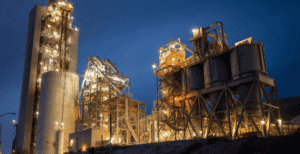Dust Prevention
Dust prevention is important for keeping a clean and healthy indoor environment. Dust comes from many sources. It can make rooms dirty and cause health problems. When there is too much dust, people may suffer from allergies or respiratory issues.
Common sources of dust include:
- Dead skin cells from people and pets
- Fabric fibers from clothes, curtains, and furniture
- Outdoor pollutants like dirt and pollen that come inside
Excessive dust can lead to health issues such as:
- Allergies that cause sneezing and itching
- Respiratory problems that make it hard to breathe
Keeping dust away helps everyone feel better and stay healthy. Regular cleaning and good ventilation can help prevent dust build-up.
Understanding How to Control Dust
Understanding how to control dust is important for a clean and healthy space. Dust can cause problems for people, especially those with allergies or asthma. There are several ways to reduce dust generation and accumulation in homes and buildings.
- First, regular cleaning helps keep dust levels low. Dust can settle on surfaces quickly.
Here are some effective cleaning methods:
- Vacuuming: Use a vacuum with a HEPA filter. This type of filter catches tiny dust particles.
- Dusting: Use a damp cloth to wipe surfaces. This traps dust instead of spreading it.
- Mopping: Clean floors with a wet mop to remove dust that falls.
- Second, proper ventilation is key to controlling dust. Good airflow helps remove dust from the air.
Here are some tips for better ventilation:
- Open Windows: When the weather is nice, open windows to let fresh air in. This helps push dust outside.
- Use Exhaust Fans: Turn on fans in kitchens and bathrooms to pull dust and moisture out.
- Third, humidity control can also help manage dust. Dust likes dry places. Keeping humidity levels balanced can reduce dust buildup.
Here are some ways to control humidity:
- Use a Humidifier: This adds moisture to dry air. It can help keep dust down.
- Fix Leaks: Repair any leaks to stop moisture from building up in unwanted areas.
By using these methods, one can effectively control dust in their environment. Regular cleaning, proper ventilation, and humidity control work together to minimize dust levels and create a healthier space.
Effective Dust Prevention Techniques for Homes
Effective dust prevention techniques for homes can help keep living spaces clean and healthy. Dust can cause allergies and other problems. Here are some practical tips to reduce dust in homes:
- Clean Regularly: Dust surfaces every week. Use a damp cloth to trap dust instead of pushing it around.
- Vacuum Often: Use a vacuum with a HEPA filter. This type of filter captures small dust particles. Vacuum carpets, rugs, and upholstery at least once a week.
- Remove Shoes: Leave shoes at the door. Shoes bring in dirt and dust from outside.
- Use Air Purifiers: Place air purifiers in rooms. They help filter out dust particles from the air.
- Wash Bedding Weekly: Wash sheets, pillowcases, and blankets in hot water. Dust mites thrive in bedding, so cleaning helps reduce them.
- Declutter: Keep surfaces clear of items. Fewer items mean less place for dust to collect.
- Keep Windows Closed: Close windows on windy days. This keeps outside dust from coming in.
- Dust with Microfiber Cloths: Use microfiber cloths instead of feather dusters. Microfiber picks up dirt better than traditional dusters.
- Change Air Filters: Replace HVAC filters regularly. Clean filters help maintain good air quality and reduce dust.
- Limit Fabrics: Choose easy-to-clean furniture. Leather or synthetic materials collect less dust than fabric.
Using these tips can make homes cleaner and reduce the amount of dust.
Role of Air Purifiers in Dust Control
Air purifiers play a key role in dust control. They help reduce airborne dust particles, making the air cleaner and healthier to breathe. When people use air purifiers, they notice better indoor air quality. It is important to choose air purifiers with HEPA filters. These filters can remove at least 99.97% of dust, pollen, mold, bacteria, and other tiny particles that are 0.3 microns or larger.
- Air purifiers trap dust and allergens in the air.
- HEPA filters ensure high efficiency in removing small particles.
- Cleaner air can lead to fewer allergies and respiratory issues.
- Air purifiers can improve sleep quality by keeping air fresh.
- They help create a healthier home environment for everyone.
Importance of Regular Cleaning in Dust Prevention
Regular cleaning is important in dust prevention. Dust can make a home feel dirty and can cause allergies. Keeping a clean space helps reduce the amount of dust that collects.
Step 1: Dust Surfaces Frequently
Dust surfaces like shelves, tables, and electronics at least once a week. Use a damp cloth to trap dust instead of spreading it around.
Step 2: Vacuum Regularly
Vacuum carpets, rugs, and floors at least twice a week. Make sure to use a vacuum with a HEPA filter. This type of filter catches tiny dust particles.
Step 3: Wash Bedding and Curtains
Wash sheets, pillowcases, and curtains every week. These items collect dust and allergens.
Step 4: Clean Air Vents and Filters
Check and clean air vents and filters every month. Dust can build up in these areas and spread around the house when the air moves.
Step 5: Keep Shoes at the Door
Shoes can bring in dirt and dust from outside. Encourage everyone to take off their shoes at the door.
Step 6: Organize Clutter
Clutter can collect dust quickly. Organize items and keep surfaces clear to make cleaning easier.
Following these steps helps keep dust away and makes a home healthier. Regular cleaning is key to enjoying a clean and fresh living space.
Advanced Filtration Solutions by Intensiv Filter Himenviro
Intensiv Filter Himenviro is a global leader in industrial filtration solutions. The company focuses on sustainability and uses advanced technology to make air cleaner. Their solutions are tailored for different industries, which helps them meet environmental regulations. By preventing dust in industrial settings, Intensiv Filter Himenviro contributes to a healthier environment. Their commitment to innovation ensures that businesses can operate efficiently while protecting the planet.
Conclusion
Dust prevention strategies are important for keeping indoor spaces healthy. Regular cleaning helps remove dust and allergens from surfaces. Using air purifiers can help clean the air and reduce dust particles. Advanced filtration solutions from industry leaders like Intensiv Filter Himenviro can provide even better dust control.
Here are some steps to consider for better dust control:
- Clean surfaces regularly with a damp cloth.
- Use a vacuum with a HEPA filter to trap dust.
- Change air filters in HVAC systems often.
- Use air purifiers in rooms to catch dust particles.
- Consider advanced filtration solutions for thorough dust management.
- Encourage everyone in the home to practice good cleaning habits.



